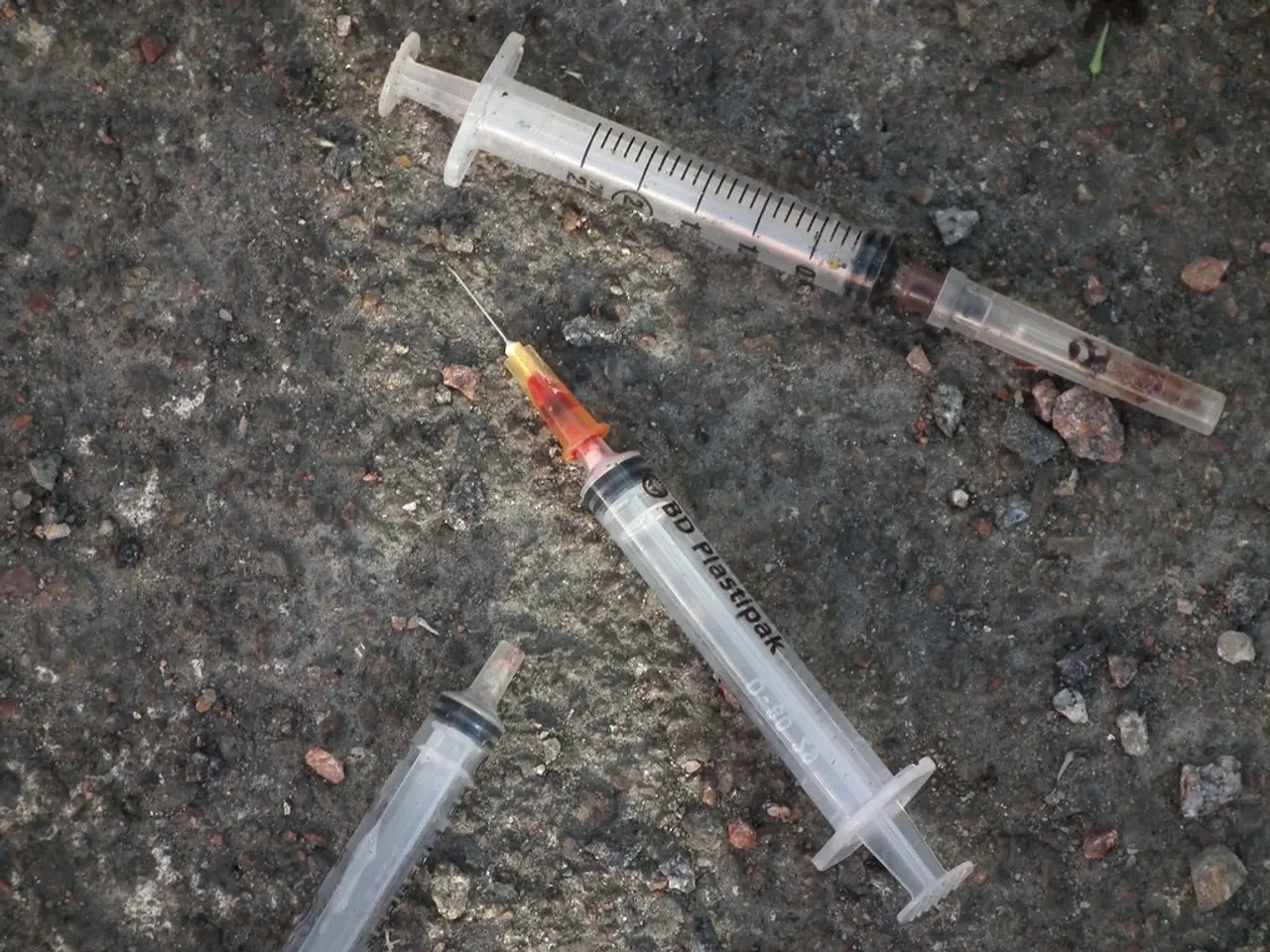Blood filtration method may potentially eliminate microplastics from our physical systems
Microplastics, tiny plastic fragments smaller than 5 millimeters, have become a growing concern in the scientific community due to their widespread presence throughout the human body. These fragments originate from everyday items such as packaging, bottles, synthetic fabrics, and industrial waste.
Recent studies suggest that microplastics may pose serious health risks, potentially harming various systems within the body. Epidemiological and toxicological studies link long-term microplastic exposure to cancer development. The particles can carry organic pollutants and have a high surface area that can damage DNA, causing mutations potentially leading to cancer.
Microplastics might also induce chronic inflammation and irritation, contributing to DNA damage and further implicating them in carcinogenicity. Research from Duke University connects microplastics to neurological conditions like Parkinson’s disease and dementia, with higher concentrations observed in people with dementia.
Moreover, living near microplastic-polluted oceans is associated with elevated risks of Type 2 diabetes, coronary artery disease, and stroke, suggesting microplastic pollution may contribute to cardiometabolic disease burdens.
The current scientific understanding indicates that microplastics in the human body pose several potential health risks, though research is ongoing to clarify mechanisms and extent. Critical gaps remain in understanding exact exposure levels, mechanisms of toxicity, and long-term health outcomes, prompting ongoing research efforts.
In light of these concerns, some individuals are seeking out treatment options to help remove microplastics from their bodies. Clarify Clinic in London offers blood-cleansing treatments aimed at removing microplastics, forever chemicals, and other toxins. The treatment, which involves therapeutic apheresis, filters blood through a specialized machine, removing abnormal proteins, unhealthy cells, and harmful substances.
In a new study, 21 patients with chronic fatigue syndrome were treated with two rounds of therapeutic apheresis. The researchers found substances with the chemical signatures of polyamide and polyurethane, two plastics commonly used in industrial manufacturing, in the waste fluid separated from the patients' blood. While further testing is needed to confirm the exact identity of the materials detected in the waste and to measure how much plastic was removed, the findings suggest the plastic particles may have been successfully removed during treatment.
The cost of treatment at Clarify Clinic starts at $12,636. The CEO of Clarify Clinic, Yael Cohen, stated that patients can perform various activities during treatment, including taking calls, doing Zooms, watching movies, and sleeping.
As research continues to uncover the extent of microplastics' impact on human health, treatment options like those offered by Clarify Clinic may become increasingly important for those concerned about the long-term effects of microplastics in their bodies. However, it is crucial to approach such treatments with caution and to continue supporting research that seeks to better understand the mechanisms of microplastics' toxicity and their long-term health effects.
[1] European Commission (2020). Microplastics in the marine environment: A European Union strategy for plastics in the environment. [2] Rochman, C. M., J. M. Teuten, and A. L. Thompson (2013). Microplastics: Small but fatal? Environmental Pollution 183, 159–168. [3] Koelmans, A. A. C., et al. (2015). Microplastics in the marine food web: A review of current knowledge and research needs. Marine Pollution Bulletin 99, 11–24. [4] Koelmans, A. A. C., et al. (2015). Microplastics in the marine food web: A review of current knowledge and research needs. Marine Pollution Bulletin 99, 11–24.
- The health concerns associated with microplastics extend beyond physical illnesses, as recent studies have linked them to mental health issues, such as Parkinson’s disease and dementia.
- In addition to health-and-wellness concerns, microplastics may also impact skin-care, considering their ability to carry organic pollutants that can potentially harm the body's largest organ.
- The environmental science community is also studying the impact of microplastics on the environment, recognizing climate-change as another critical factor in their widespread presence, as microplastics originate from various sources, including industrial waste.
- Furthermore, fitness-and-exercise enthusiasts should be aware of the potential effects of microplastics on their performance, as research is underway to explore the connection between microplastic intake and decreased cardiovascular health, such as Type 2 diabetes and stroke.




